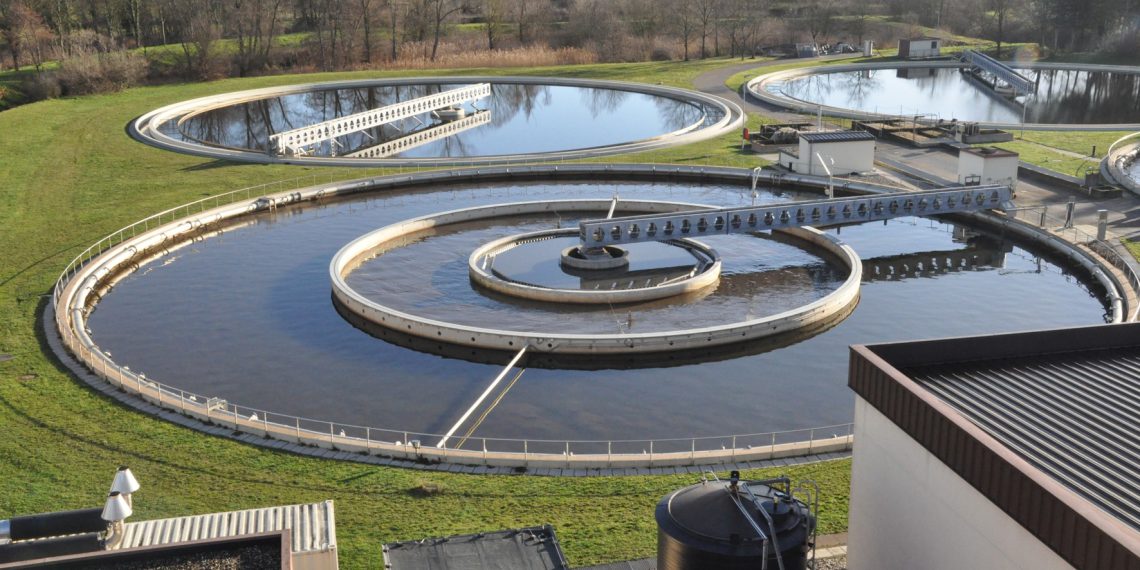The demand for forward-looking wastewater treatment is growing with the increasing pressure for more climate and environmental protection. Microplastics and micropollutants pose complex challenges for wastewater treatment plants. The three treatment stages commonly used to date are reaching their limits in the face of a wide variety of pollution situations. Innovative processes for the removal of micropollutants and microplastics are in the starting blocks and promise greater efficiency in process and purification performance. These processes include Water 3.0 PE‑X® and Advanox™ + MicrOx™. A first-time comparative long-term study is now starting at the Landau-Mörlheim wastewater treatment plant to investigate how these processes can be effectively used and combined in municipal wastewater treatment.
The cooperation partners are relying on synergy effects
The Landau-Mörlheim wastewater treatment plant has been the development site of the non-profit GreenTech company Wasser 3.0 from Karlsruhe for many years. The Wasser 3.0 PE‑X® process based on hybrid silica gels for use in municipal wastewater is currently being tested there in a twelve-month long-term trial. This is now being extended to include the Advanox™ + MicrOx™ process based on oxidation by hydrogen peroxide and UV‑C light.
The aim of the joint project between Van Remmen UV Technology, Nouryon and Water 3.0 is to evaluate the possible combinations of Advanox™ + MicrOx™ and Water 3.0 PE‑X®, their efficiency and cost-effectiveness. In addition, the micropollutant removal of both processes will be analyzed and compared.
Based on the latest research results of Water 3.0 in the field of microplastics detection, the comparative long-term study will also use continuous process control for the first time, which should enable high process effectiveness. The process is also responsible for the scientific management of the study.
Hybrid silica gels for water purification
The process is a new approach in municipal and industrial (waste) water treatment. Non-toxic hybrid silica gels and sophisticated low-tech equipment are flexibly adaptable and scalable to different pollution scenarios with microplastics and micropollutants. As a filter-free clump & skim process, it is used as a stand-alone solution or integrated into existing processes.
This removal technology is part of the detect | remove | reuse strategy. It stands for a sustainably thought-out approach to microplastics and micropollutants in water. While a novel detection process for microplastics enables resource and removal efficiency, the reuse of the removed agglomerates and process waters make water treatment bioeconomically and circularly desirable.
Advanced Oxidation Process combining UV‑C light and hydrogen peroxide.
Van Remmen UV Technology and Nouryon have joined forces in a unique partnership that offers a complete customized solution for the removal of pharmaceuticals and other micropollutants with an Advanced Oxidation Process (AOP). The expansion of AOP concepts is at the forefront of joint development projects that reduce levels of pesticides, drug residues, cyanide, x‑ray contrast agents and other complex organic pollutants in water. The Advanox™ + MicrOx™ process combines UV‑C light with hydrogen peroxide to effectively oxidize persistent micropollutants. It is a clean technology with no harmful byproducts.
Advanox™ reactors have been specifically designed and optimized for the photolysis and oxidation of micropollutants with UV‑C light and the addition of hydrogen peroxide.
Hydrogen peroxide is a versatile product and is used in a wide variety of applications. It is known as an environmentally safe product that decomposes only in oxygen and water; it is an essential ingredient in environmental applications such as water and waste gas treatment. Nouryon produces hydrogen peroxide in a sustainable and resource-efficient manner that is evaluated across the value chain.

















